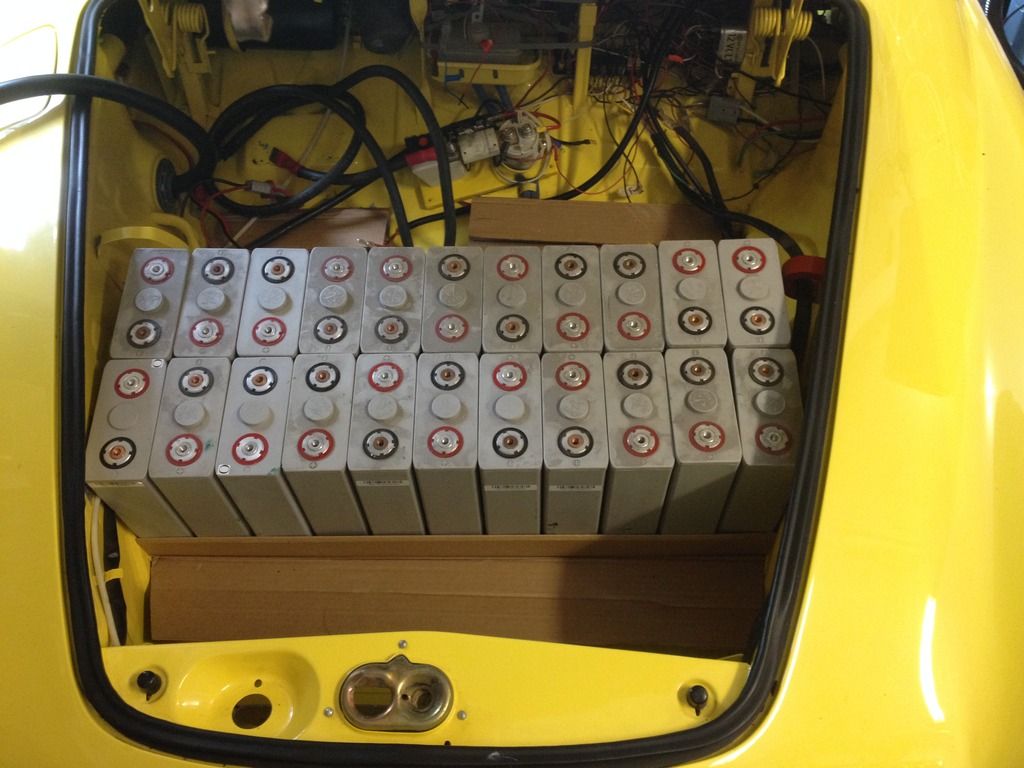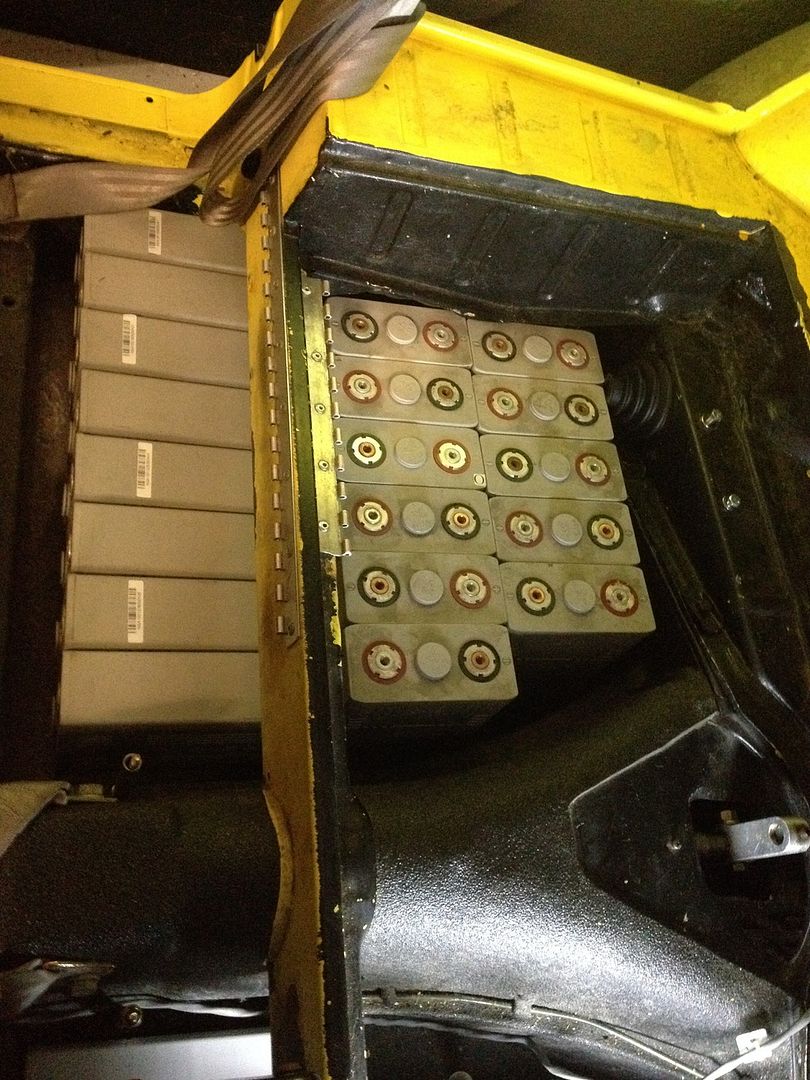Now it's on!
After increasing frustrations with my flooded nicad pack, I'm finally making the upgrade to Lithium! As sadly happens often in this hobby, one project died that another might live. I purchased a full inventory of conversion components from the widow of a gentleman who obsessively ordered parts for his planned Corvair conversion while in a cancer ward, but he never made it back into the garage. Most of the components are now energizing a brand new conversion by a first-timer who needed a good buy, but the battery cells remained with me, and have been rounded up from 38 to 60 cells with matching inventory from good 'ol Don Blazer of Portland OR, who has organized many group buys over the last decade.
So, out come the nicads, destined for second lives in other projects, and in goes 19.8 kWh worth of lithium that should be more reliable and live through more cycles than any OEM vehicle. That's saying something, because I've been very impressed with the pack management in my Mitsubishi i-MiEV, which shows no measurable degradation after 42,000 miles in two years of driving (three years after manufacture, as this car sat on the dealer lot for a full year before I purchased), and between it and the first i-MiEV, I'm at over 65,000 i-miles.
Back to the transplant. I expect improved performance, which had been stuck at a 16.8 second, 81 mph quarter mile due to severe voltage sag in my nicad pack. Range should also improve from 30 miles on a prayer with the 7.2 kWh of nicads to a confident 80 miles with the lighter weight 19.8 kWh pack of CALBs. My 62 mile-rated Mitsu is capable of over 80 miles of sedate driving on local roads in summer from its 16 kWh pack, and in back-to-back tests, the Karmann Eclectric has delivered the same 200 Watt-hrs per mile efficiency when driven on the same route in the same manner (and that was on big sticky performance tires!).
Prior to putting the cells into the car, a 'bottom balance' was executed, which consists of placing the cells in parallel, for a 6000 amp-hour, 3.2 Volt pack, and deeply discharging them, then recharging while still connected in parallel. That ensures an equal start on life.
Here's the front pack layout, 2x11 cells.
And here's one of the two rear subpacks, each holding 19 cells. It always amazes me how much work it takes to figure out how to fit stuff in there in a matter that looks obvious in the end...



